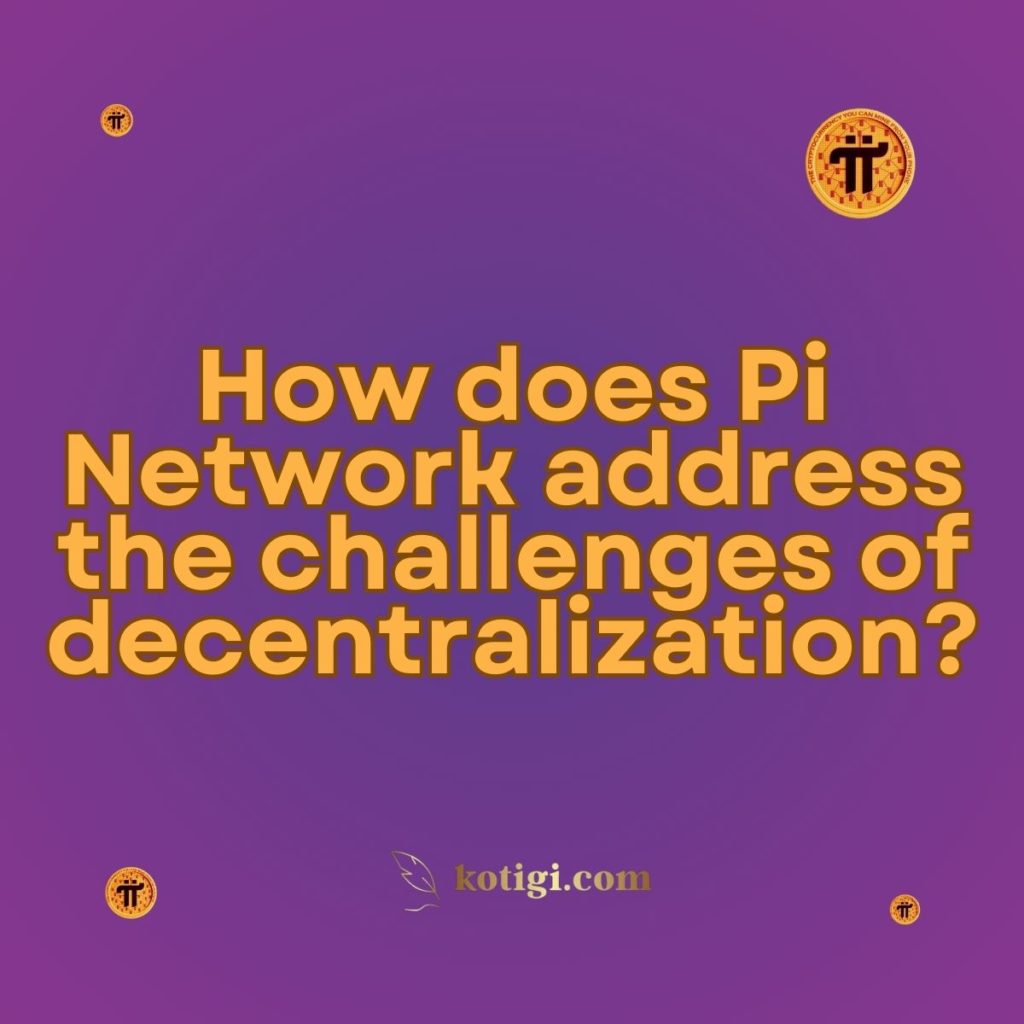
How does Pi Network address the challenges of decentralization?
Pi Network aims to create a decentralized and user-centric blockchain ecosystem. However, achieving true decentralization presents several challenges, including scalability, security, and user participation. To tackle these challenges, Pi Network employs a combination of innovative technologies, community-driven approaches, and strategic design choices. Here’s an in-depth look at how Pi Network addresses the challenges of decentralization.
1. Building a Decentralized Network Architecture
1.1 Introducing the Pi Node Infrastructure
Pi Network relies on a distributed network of nodes operated by community members to achieve decentralization. These Pi Nodes run on users’ computers and contribute to network security, transaction validation, and consensus. By allowing everyday users to operate nodes without requiring high computational power, Pi Network lowers entry barriers, promoting a more inclusive and decentralized network.
1.2 Lightweight Nodes and Scalability
To ensure scalability while maintaining decentralization, Pi Network uses lightweight nodes. These nodes do not require extensive computing resources, unlike traditional blockchain networks. This approach allows a larger number of participants to run nodes, enhancing decentralization without sacrificing network performance. The lightweight architecture also helps to reduce the risk of centralization caused by a few powerful nodes dominating the network.
2. Leveraging the Stellar Consensus Protocol (SCP)
2.1 Efficient Consensus Mechanism
Pi Network uses a modified version of the Stellar Consensus Protocol (SCP) to achieve consensus in a decentralized manner. SCP employs a Federated Byzantine Agreement (FBA) model, where nodes form “quorum slices” and reach consensus through overlapping agreements. This approach is more energy-efficient than Proof of Work (PoW) and does not require significant computational resources, making it suitable for a decentralized network operated by diverse users.
2.2 Preventing Centralization of Control
By leveraging SCP, Pi Network prevents centralization of control that often occurs in other consensus mechanisms like Proof of Stake (PoS), where wealthier participants gain more power. Instead, SCP ensures that consensus is achieved based on trust and cooperation among nodes, maintaining a fair and decentralized network.
3. Empowering the Community Through Security Circles
3.1 Building Trust Networks with Security Circles
Pi Network introduces Security Circles, which are small groups of trusted users that create a web of trust within the network. Security Circles help verify the authenticity of participants and transactions, reducing the risk of Sybil attacks (where a malicious entity creates multiple fake identities to manipulate the network). By decentralizing trust through these user-created circles, Pi Network enhances security without relying on centralized authorities.
3.2 Encouraging Active User Participation
Security Circles not only improve security but also encourage user participation. Every user who creates or joins a Security Circle actively contributes to the decentralization and integrity of the network. This involvement fosters a sense of ownership and responsibility among users, further promoting decentralization.
4. Addressing Governance and Decision-Making Challenges
4.1 Decentralized Governance Model
Pi Network is working towards implementing a decentralized governance model that involves its community in key decision-making processes. By using voting mechanisms powered by smart contracts, Pi Network allows its users to propose, discuss, and vote on protocol changes, new features, and policies. This democratic approach helps distribute power more evenly across the community, addressing the challenge of centralized decision-making.
4.2 Transparency and Community Feedback
To maintain transparency, Pi Network regularly updates its community about development progress, governance changes, and compliance efforts. By encouraging open dialogue and feedback, the network ensures that decisions are made in the best interest of its users, not just a small group of stakeholders.
5. Ensuring Fair Token Distribution and Access
5.1 Fair Distribution Model
Pi Network uses a fair token distribution model to prevent the centralization of wealth and power. The network does not rely on traditional mining, which often leads to centralization due to high entry costs and hardware requirements. Instead, Pi tokens are mined through a mobile app that rewards users for their contributions to the network, such as securing the network through Security Circles or inviting new members.
5.2 Reducing Barriers to Entry
By allowing users to mine Pi on mobile devices without high energy costs or technical knowledge, Pi Network lowers barriers to entry. This inclusive approach helps to attract a more diverse user base, distributing tokens more widely and preventing a few individuals from gaining excessive control over the network.
6. Enhancing Network Security and Reliability
6.1 Community-Driven Node Validation
Pi Network relies on community-driven node validation to enhance security and decentralization. By enabling a large number of users to run nodes and participate in consensus, Pi Network reduces the risk of a single point of failure or malicious takeover by a few entities. This model strengthens the network’s resilience against attacks.
6.2 Regular Security Audits and Upgrades
To maintain a secure decentralized network, Pi Network conducts regular security audits and system upgrades. This proactive approach helps identify potential vulnerabilities and ensures that the network remains robust and secure over time.
Conclusion
Pi Network addresses the challenges of decentralization through a combination of innovative technology, inclusive practices, and community empowerment. By utilizing the Stellar Consensus Protocol, implementing Security Circles, fostering decentralized governance, and ensuring fair token distribution, Pi Network creates a balanced and secure environment for its users. These strategies help maintain a decentralized network that is both scalable and resilient, paving the way for sustainable growth and mass adoption.




